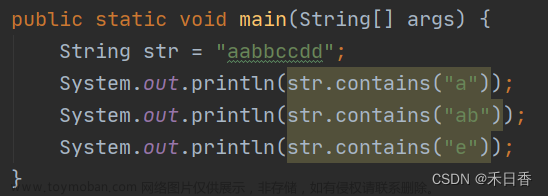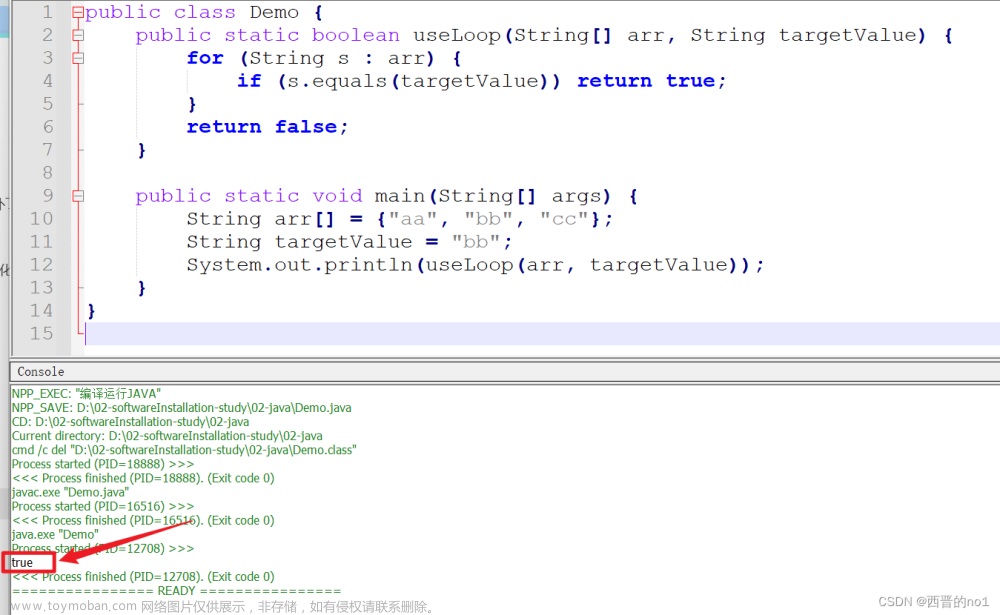字符串比较的三种方式:==,equals,Objects.equals
==判断字符串的索引值是否相同
public class StringTest {
public static void main(String[] args) {
String a=new String("abc");
String b=new String("abc");
if(a==b) { //使用“==”来判断两字符串
System.out.println("a==b为true");
}else {
System.out.println("a==b为false");
}
}
}
打印结果
a==b为false
因为两个字符串的索引值不同。
equals判断两个字符串的值是否相同
public class StringTest {
public static void main(String[] args) {
String a=new String("abc");
String b=new String("abc");
if(a.equals(b)) {
System.out.println("a.equals(b)为true");
}else {
System.out.println("a.equals(b)为false");
}
}
}打印结果为
a.equals(b)为true
因为两个字符串的值相同。
所以在java中进行字符串比较时,经常使用equals比较两字符是否相同。一个固定的字符串和字符串数组(或list集合)进行比较时,为了避免空指针异常。采用将固定的字符串放在左边的写法,如下:
public class StringTest {
public static void main(String[] args) {
String[] strs= {null,"a","b",null,null};
//判断“a”是否包含在字符串数组中
for(int i=0;i<strs.length;i++) {
if("a".equals(strs[i])) {
System.out.println("“a”包含在字符串数组strs中");
break;
}
}
}
}打印结果
“a”包含在字符串数组strs中
如果将 if中的判断语句写成strs[i].equals("a")则会出现空指针异常。
当左右两边的字符串都无法保证不为空时,可以使用Objects.equals()
import java.util.Objects;
public class StringTest {
public static void main(String[] args) {
boolean res1=Objects.equals(new String("a"), new String("a"));
boolean res2=Objects.equals("a", "a");
boolean res3=Objects.equals(null, null);//注意当两边都为空时,结果为true
System.out.println(res1);
System.out.println(res2);
System.out.println(res3);
}
}打印结果为
true
true
true文章来源:https://www.toymoban.com/news/detail-400180.html
Objects.equals()判断的也是字符串的值,但要注意当两个字符串都为空时,判断为true。文章来源地址https://www.toymoban.com/news/detail-400180.html
到了这里,关于java中比较两字符串是否相等的文章就介绍完了。如果您还想了解更多内容,请在右上角搜索TOY模板网以前的文章或继续浏览下面的相关文章,希望大家以后多多支持TOY模板网!










